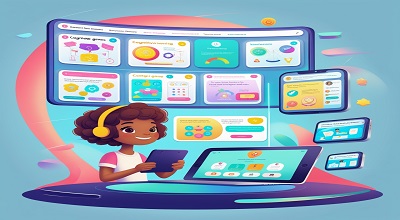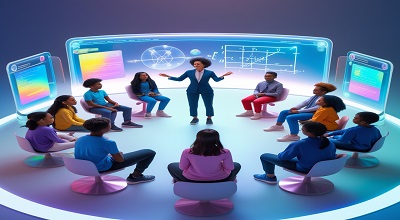Gamified eLearning Tools
Gamified eLearning Tools integrates game mechanics—such as points, badges, leaderboards, and challenges—into digital learning platforms to enhance engagement and motivation. This approach makes learning interactive, fun, and effective by leveraging the psychological principles of rewards and competition.
With the rise of remote and hybrid learning, gamification has become a key strategy for educators and corporate trainers. In this guide, we’ll explore the latest gamified eLearning tools, real-world examples, and best practices for implementation.
Why Gamification Works in eLearning?
Boosts Engagement & Motivation
- Game elements like rewards and progress tracking keep learners motivated.
- Instant feedback encourages continuous participation.
Enhances Knowledge Retention
- Interactive scenarios and quizzes improve memory retention.
- Story-based learning makes complex topics easier to understand.
2.3 Encourages Healthy Competition
- Leaderboards and team challenges foster a competitive yet collaborative environment.
Provides Personalised Learning Paths
- Adaptive learning algorithms adjust difficulty based on performance.
Top Gamified eLearning Tools in 2024
Here are the best gamified eLearning platforms currently available:
Kahoot!
- Features: Quiz-based learning, live competitions, leaderboards.
- Best For: K-12 and corporate training.
- Example: Teachers use Kahoot! for interactive classroom quizzes.
Duolingo
- Features: Streaks, XP points, skill trees.
- Best For: Language learning.
- Example: Users earn badges for daily practice.
Classcraft
- Features: RPG-style avatars, team quests, behavior tracking.
- Best For: School engagement & classroom management.
Quizizz
- Features: Self-paced quizzes, memes for feedback.
- Best For: Remote assessments.
Mambo.IO
- Features: Customizable gamification for corporate training.
- Best For: Employee onboarding & compliance training.
ProProfs Training Maker
- Features: Badges, certificates, and interactive courses.
- Best For: Employee skill development.
CodeCombat
- Features: Learn coding through game-based challenges.
- Best For: Programming education.
Examples of Gamification in eLearning
Corporate Training – Deloitte Leadership Academy
- Uses badges and leaderboards to encourage course completion.
Higher Education – Coursera’s Specializations
- Learners earn certificates upon completing gamified modules.
K-12 Learning – Minecraft: Education Edition
- Students solve problems in a virtual world.
How to Choose the Right Gamified eLearning Tool?
- Define Learning Objectives (What skills should learners gain?)
- Check Customization Options (Can you tailor rewards & challenges?)
- Assess User Experience (Is the interface intuitive?)
- Review Analytics & Reporting (Does it track progress effectively?)
- Consider Budget & Scalability (Is it cost-effective for large groups?)
Future Trends in Gamified eLearning
- AI-Powered Personalization (Adaptive learning paths)
- VR & AR Integration (Immersive gamified experiences)
- Blockchain for Credentials (Secure digital badges & certificates)
- Social Learning Games (Multiplayer knowledge challenges)
FAQs About Gamified eLearning
Q1: What is gamified eLearning?
A: It’s the use of game mechanics (points, badges, leaderboards) in digital learning to boost engagement.
Q2: Which industries use gamified learning?
A: Education, corporate training, healthcare, and even military training.
Q3: Does gamification improve learning outcomes?
A: Yes, studies show it increases retention and participation rates.
Q4: Are gamified tools expensive?
A: Some are free (like Kahoot!), while enterprise solutions may require a subscription.
Q5: Can gamification work for adult learners?
A: Absolutely! Many corporate training programs use gamification for employee upskilling.
Conclusion
Gamified eLearning is transforming education and training by making learning interactive and fun. With the right tools and strategies, educators and trainers can significantly enhance engagement and knowledge retention.
Free Here: School Dot Fight APK





